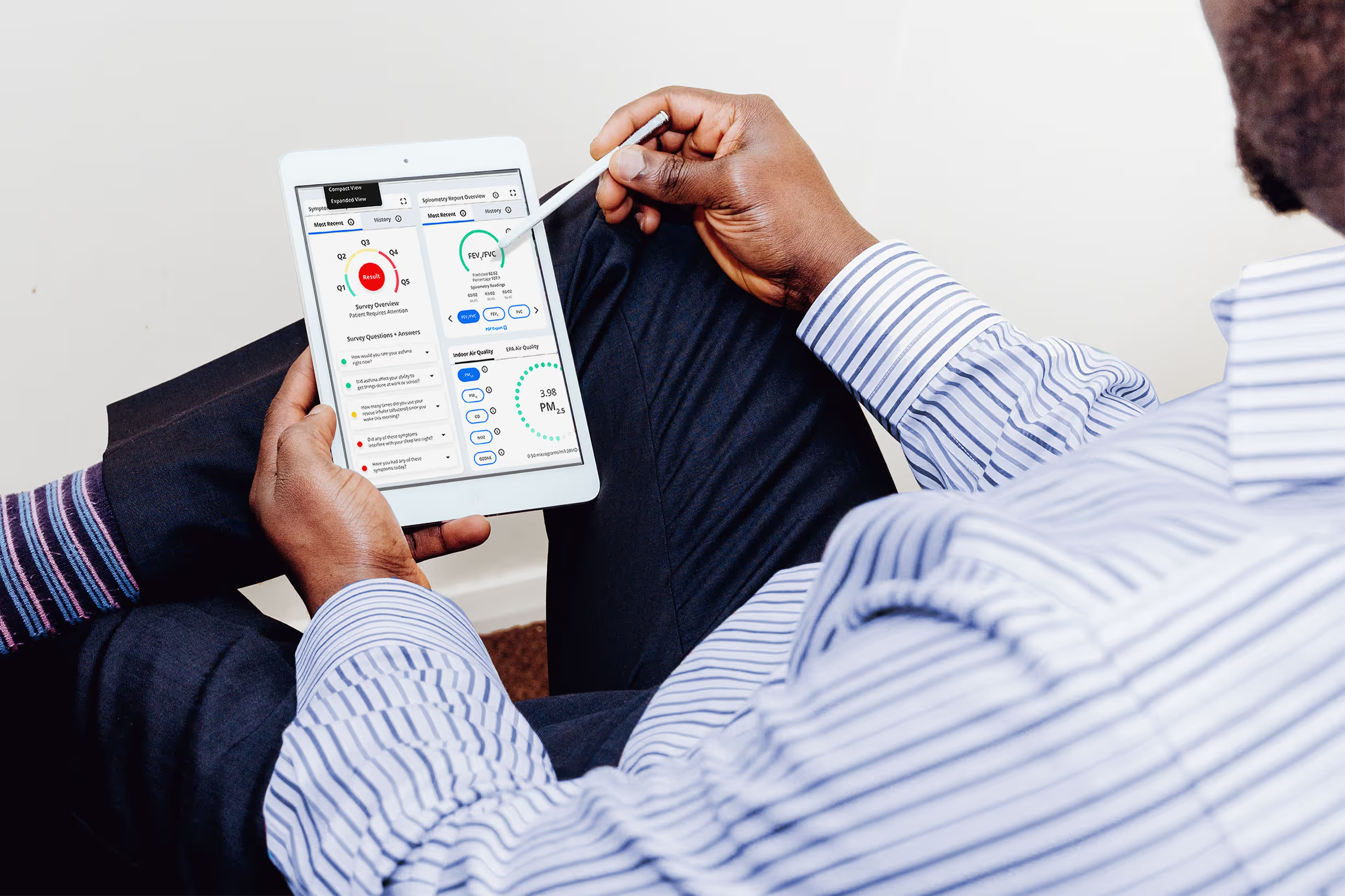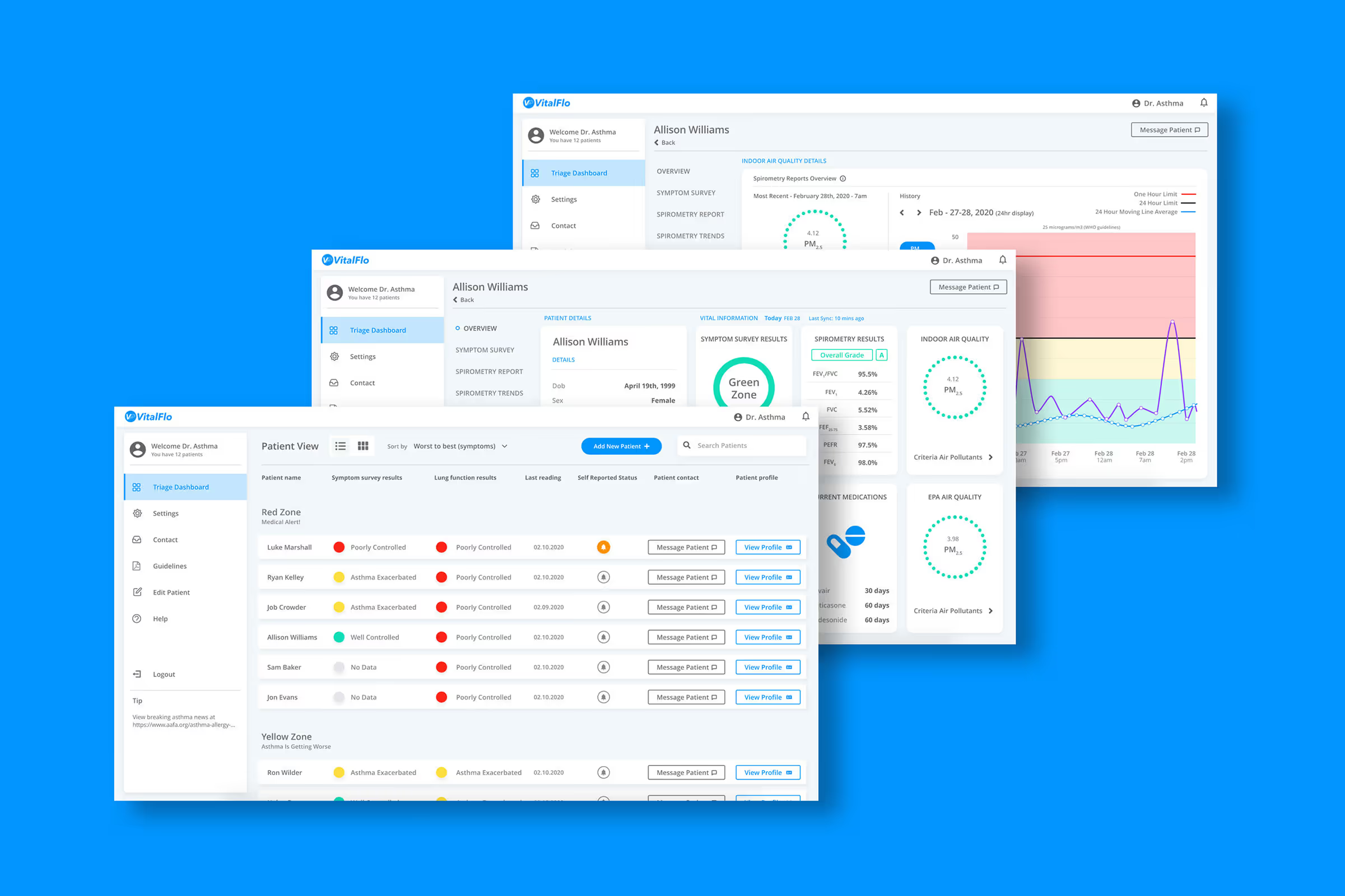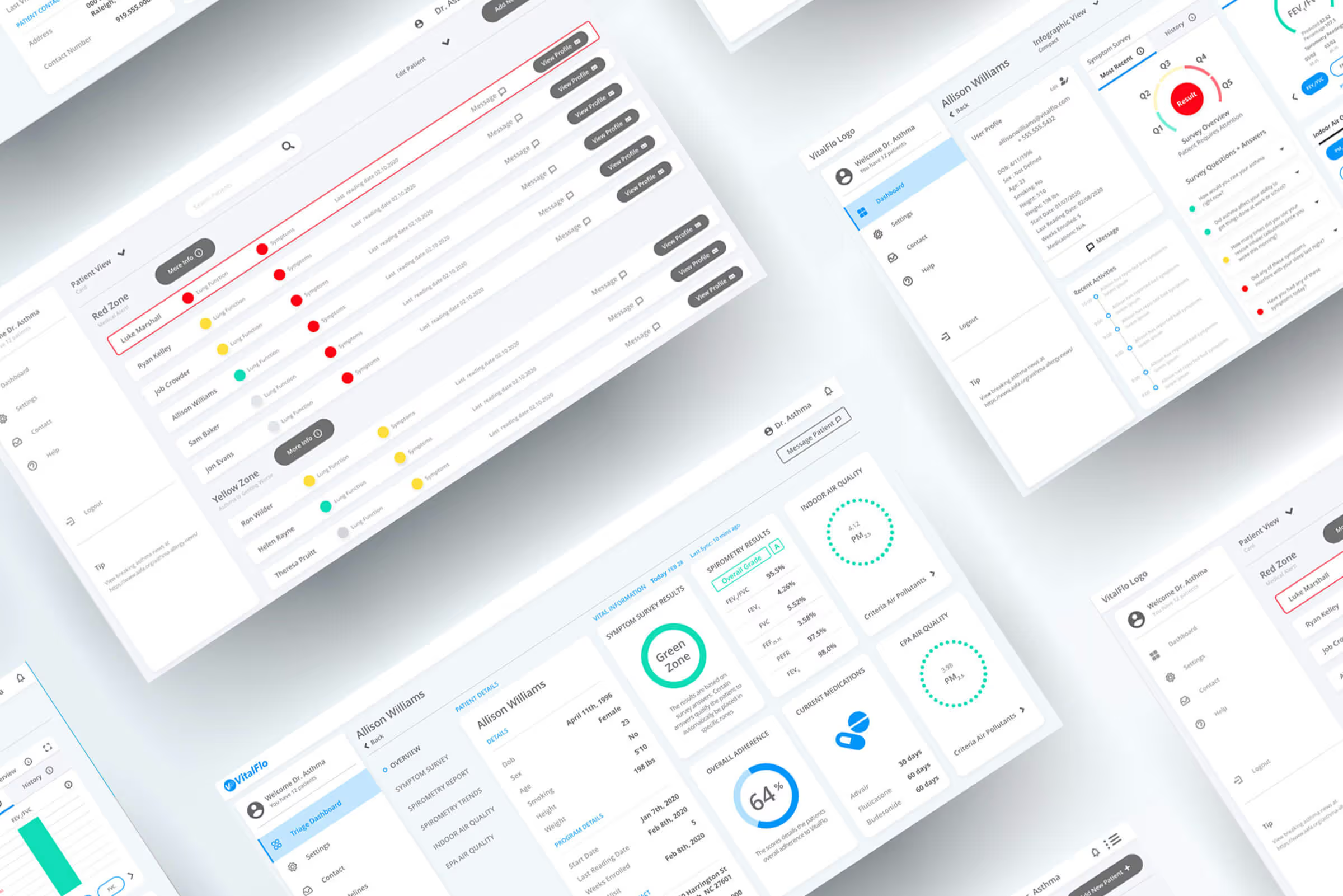Healthcare in action
VitalFlo is a digital health company focused on reducing risk of asthma attacks in the US’s most vulnerable populations. For their initial product, VitalFlo partnered with Trig to design a clear, compelling clinical portal experience driven by stakeholder feedback.

Detecting small changes
VitalFlo understands it’s difficult for patients to detect small changes in their condition. This insight drives their mission to track asthma attack risk factors, equipping physicians with data to intervene before patients end up in the emergency room. VitalFlo’s home monitoring system combines local air quality data along with the patient’s lung function, symptoms, and medication use to provide a holistic picture of respiratory health.
The challenge is that this also generates a considerable influx of new data for physicians to consider. A team member explained, “We have decades of research that says the environmental data is important, it just isn't being delivered to the clinical practice in any meaningful way”. To achieve their promise of effective, personalized care plans, VitalFlo needed to develop an analytics tool that wasn’t a burden for care teams.
VitalFlo approached Trig to create a physician portal design guide informed by stakeholder feedback. Our research needed to confirm that physicians believed the right info was easily accessible, intuitive, and trustworthy. The end deliverable would serve as a clear visual and interactive guide for the back-end app development process.
Exploring the entire journey
Our first touch point set up VitalFlo’s pivot from consumer hardware to clinical software. Trig presented a competitive analysis of spirometers and companion apps, highlighting the availability of FDA-approved devices on the market. When VitalFlo subsequently changed course, our digital UX/UI design capabilities meant we could pivot with their team toward a more commercially viable path.
We started by discussing new UX goals as a team, pinpointing features of our portal prototype that needed to understood from the physician’s perspective. This was crucial for our researchers to create a semi-structured interview guide that maximized precious time with subject matter experts.
Next, Trig conducted video call interviews with general physicians, asthma specialists, and respiratory therapy nurses; one researcher focused on leading discussion while the other took notes and followed up with clarifying questions. At the end of the first wave, we organized comments from each interview into bright spots and roadblocks to adoption. Trig presented these insights in a summary to VitalFlo, who quickly approved implementation. Our research and UX teams worked seamlessly to incorporate feedback into a new design for the next wave of interviews.
The second interviews were structured to hone in on navigation and usability, steering conversation toward tactical feedback. Our researchers synthesized all that qualitative data into recommendations to shed unnecessary elements and fine-tune communication of key data. In a short period of time, Trig arrived at a UX/UI design guide that gave VitalFlo confidence as they launch into a broader market.
Explore

Prototype

Build

“The clinician interviews were especially helpful in my product management role. We got a lot of valuable feedback that helped us better align our product roadmap to what the end users need.”

Final thoughts
Trig’s clinical interviews uncovered what mattered most to physicians. And since our design team includes experts in UX and research, we could quickly iterate and implement before the next round of interviews. The result was a streamlined digital tool that improves physician-patient communication, keeping high-risk asthma sufferers out of the ER.










